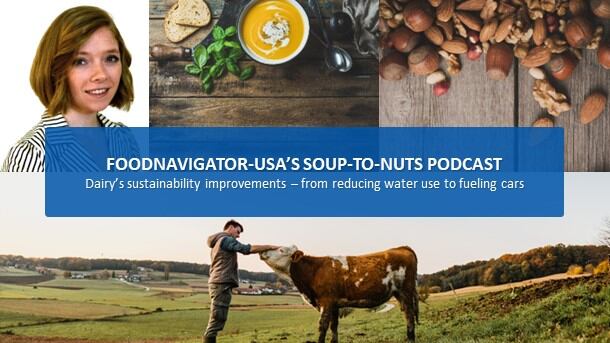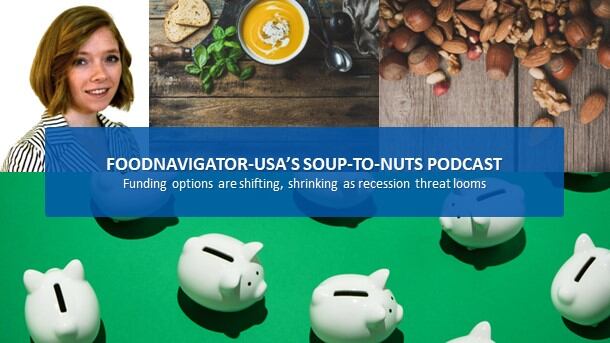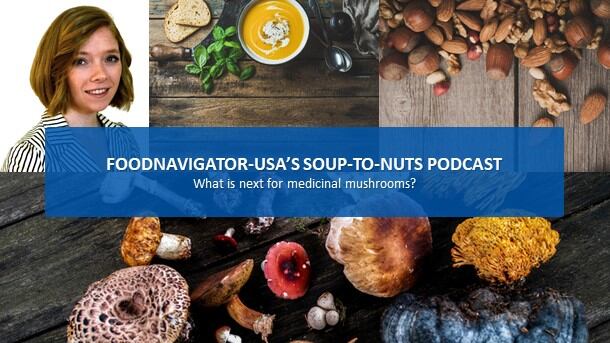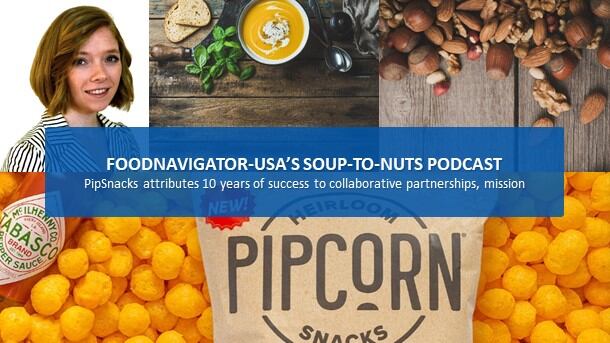But for more than a decade, the US dairy industry has been working aggressively to reduce cows’ carbon hoofprint and meet ambitious goals to become greenhouse gas neutral, optimize their water use and improve water quality by 2050.
In this episode of FoodNavigator-USA’s Soup-To-Nuts podcast, Karen Scanlon, executive vice president, environmental stewardship for Dairy Management Inc. and the Innovation Center for US Dairy, shares details about these goals and the progress industry is making to achieve them.
[Editor’s note: Never miss an episode of FoodNavigator-USA’s Soup To Nuts Podcast – subscribe today.]
‘The Innovation Center was set on a path to demonstrate the transformative good that … dairy does’
Like most intentional sustainability initiatives, the US dairy industry, under the guidance of the Dairy Checkoff and Innovation Center for US Dairy, began its journey to improve its environmental impact with a lifecycle analysis in 2008 – the first of its kind in the US food agriculture sector. As Scanlon explains, its findings weren’t as bad as many thought, but there was room for significant improvement.
The LCA focused on fluid milk and found that US dairy accounts for 2% total greenhouse gas emissions in the US, 5.1% of US water use and 3.7% of US farmland.
“Knowing the commitment that farmers and dairy companies have to continuous improvement, the Innovation Center was set on a path to demonstrate that transformative good that we believe dairy does for people, for communities and for the planet,” Scanlon said.
And it is already making progress since the assessment was conducted, and while there is more to do, she said the progress demonstrates US dairy farmers’ commitment to caring for the earth and responding to consumer concerns about how their food is made.
“We know that globally 75% of consumers care about how their food was produced, so it is critically important for us to convey that not only has US dairy set some specific environmental goals, but that really, in fact, US dairy farmers have a legacy as environmental stewards and continually innovating and improving and lowering their footprint by adapting and adopting specific practices and technologies,” Scanlon said.
Through these actions, she added, farmers can now produce 60% more milk with 15 million fewer cows, 65% less water, and 90% less land than they did 76 years ago. And that’s a 63% smaller carbon footprint.
“Fast forward several years to today, that continued progress shows that producing a gallon of milk has shrunk significantly from 2007, requiring 30% less water, 21% less land and a 19% smaller footprint,” Scanlon added.
Three top goals
Armed with the findings from the LCA, the US Dairy Innovation Center currently works with 34 companies, representing 75% of milk production and representing stakeholders across the industry to identify key areas for improvement and outline how different players could positively change dairy’s environmental impact. The result, was the US Dairy Stewardship Commitment, which Scanlon explains identified three priorities that could drive outsized impact.
Through this, the industry conducted a materiality assessment that identified three main areas of focus for the industry through 2050, including reducing greenhouse gas emissions, improving water use and water quality and improving nutrient management and soil health.
“It is important to convey that these goals are collective across the industry, and when we think about the dairy industry that includes at the field level where the feed crops are grown … where the cows are cared for and produce the milk and the dairy processing facility where the fluid milk from the farm is made into dairy products,” Scanlon said.
Lowering greenhouse gas emissions
Taking a closer look at the three priorities set by the dairy industry, it may be surprising to some that reaching greenhouse gas neutrality by 2050 made the cut given the LCA’s discovery that dairy cows contribute only 2% of total greenhouse gas emissions in the US. But as Scanlon notes, every incremental reduction can have a tremendous impact on the earth’s climate.
“Through the LCA, US dairy knows that its greenhouse gas emissions about 2% of total greenhouse gas emissions in the United States. That doesn't mean we don't have an impact that we care about and want to continue to focus on and believe that it's possible for the industry to reach greenhouse gas neutrality, meaning that the emissions into the atmosphere are balanced by removes from the atmosphere,” Scanlon said.
She explained in 2020 the industry launched the US Dairy Net Zero initiative to accelerate voluntary actions to reduce environmental impacts by making practices and technology more accessible and affordable to farms of all sizes across the country.
One example of how the dairy industry is reducing enteric emissions of methane – so emissions from cow burps and manure – is to test dietary additives that can help settle cows’ stomachs and reduce the gas they pass.
Improving water management
The dairy industry’s second and third goals focus on water, which Scanlon said ranked “very high” as a topic that the industry should focus on because it is a finite resource but also an essential one. To ensure that every last drop is used responsibly and to its fullest, Scanlon explains that the second goal looks at how farms can maximize water use by recycling it more efficiently.
She explained that 94% of water used by the US dairy industry goes to crop irrigation, and so improving dairy feed production is a top priority. In addition, most dairy farms use a gallon of water seven or eight times in their closed system, including for drinking, cooling cows, cleaning, and to facilitate storage.
Building on this, the third goal for 2050 is to improve water quality, which relates in part to how farms manage manure – or other nutrients – and cultivate healthy soil.
“Paying attention to water quality is also paying attention to how manure and nutrients are used on the dairy farm and on feed production acres, and as we incorporate manure as fertilizer on the production acres, we’re also helping to build soil health,” which improves water absorption, reduces runoff and improves the surrounding waterways, she said.
Celebrating successes
One way the industry is tracking its progress towards this goals is by celebrating “best in class” farms and companies that apply innovating practices and technologies that are scalable and replicable across the country.
Last week, the 2022 winners were announced and included seven farms, businesses and partnerships that displayed excellence in methane and other greenhouse gas reduction, such as Bar 20 in Kerman, Calif., which teamed with BMW North America to use renewable electricity from its dairy digester to help power more than 17,000 electric vehicles per year.
This year’s awards also recognized innovative water use efficiencies, including GrayHouse Farms in Stony Point, North Carolina, which designed their dairy with efficiency in mind and incorporated a four-stage lagoon to best use nutrients and water.
Scanlon also calls out past notable winners, including a Washington State dairy farmer who uses worms to filter this cow manure, which allows him to reduce odor, greenhouse gas emissions and the number of trucks transporting manure off the farm.
Another example highlights a partnership in which two companies created a private municipal treatment plant to manage industrial waste to reduce stress on the municipal infrastructure and eliminate hauling of waste from the facility and generate renewable energy.
Funding sustainable solutions
Recognizing that some innovative sustainable solutions can be expensive, Scanlon said the Net Zero Initiative is working to include dairy farms in the evolving ecosystem service markets to reward farmers who are reducing their environmental footprint, sequestering carbon or reducing methane emissions.
Likewise, she said, some farms fund sustainability initiatives by leveraging the manure-based products market, such as fertilizers, compost and other products from aged manure.
“We're connecting the business economics with the benefit of environmental practices on farm and that means we're creating this really continually improving sustainable dairy industry. And that's definitely what we want to focus on through our initiatives,” she said.
For dairy industry stakeholders looking to improve their sustainability or contribute to these goals, Scanlon recommends they start by identifying where they are. Farmers can do this with a farm environmental stewardship assessment provided by the National Milk Producers Federation. For dairy processors, the Innovation Center recently produced a guid to map out a company’s sustainability journey.
As for brands, she encourages them to come to the table and work with dairy by advancing research and pilots that support or enable farms and processors. Two that are already involved include Nestle and Starbucks.




